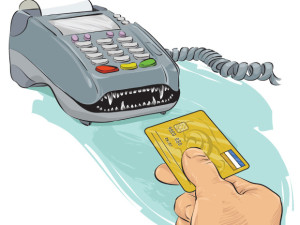 Over time credit cards have become one of the most popular finance options. Their flexibility means that they can be used in almost any financial situations; whether you’re looking to spread the repayments of a large purchase, spend money overseas, build your credit history or earn loyalty points or rewards on transactions.
Over time credit cards have become one of the most popular finance options. Their flexibility means that they can be used in almost any financial situations; whether you’re looking to spread the repayments of a large purchase, spend money overseas, build your credit history or earn loyalty points or rewards on transactions.
Unfortunately though, when they are not managed properly credit cards can cause real financial problems – and because of their relatively high interest rates; the longer you leave it the worse it gets. Throughout this article we are going to run through a 5 step guide to how you can overcome credit card debt and get your finances back on track:
Step One: Calculate how much you owe
Although it may be tough to face the reality of your problems, this is ultimately the first step to overcoming your debt. So, find your most recent statements and see how much you have outstanding on each card. Until you are debt free it’s definitely a good idea to stay away from spending anymore on your cards.
When noting down all outstanding balances it may also be a good idea to include the interest you’re being charged highlighting any interest free deals or bonuses that you are currently benefiting from.
Step Two: Create/ recreate your budget
There are three possible reasons you got into debt in the first place:
1. You overspent month on month
2. Your budget wasn’t effective
3. You didn’t have a budget
Whatever the root cause of your problems, you need to draw a line underneath it and work on putting things right. The single most effective way of doing this is by creating an effective monthly budget.
To do this you firstly need to note down all sources of income that you’re receiving month-on-month. This will include your mainsalary, any other jobs you may have, anything you may be earning on savings or investments and finally any benefits or tax credits you may earn. Having added all of these together you now need to calculate your level of outgoings.
In order to determine how much you are spending throughout the month you firstly need to gather as many recent bank statements as you can. Arguably the most effective way of listing your outgoings is to split them into compulsory, essential and luxuries. Your compulsory outgoings will be payments that you make each month without fail, so things like: your rent or mortgage, utilities, council tax, loan repayments and insurance costs. Your essentials are things that you couldn’t get by without but often differ in cost each month, such as food, petrol, mobile phone and broadband bills, car maintenance costs, TV licence and parking costs. Finally, you luxuries are things that you don’t necessarily need such as entertainment costs, night outs, dining out, gym memberships, holidays and gifts.
It will be evident by simply looking at your bank statements whether each expense differs on a monthly basis or stays the same. For those expenses that differ, take an average from the past three months and if you’re in any doubt always overcompensate.
Your final step is to calculate your disposable income; this simply involves deducting your total monthly outgoings from your total monthly income.
Step Three: Adjust your budget
Now it’s time to make some adjustments to your budget in order to increase your level of disposable income. There are two ways of doing this; increase your income or decrease your outgoings. Decreasing your level of outgoings will be the simplest way of doing this, and your first stop should always be the luxuries section. By simply reducing the amount you spend on eating out, takeaways and seasonal gifts you could find yourself £100 better off over the course of the month.
Always assess your subscriptions too; do you get the most out of your gym membership? Do you really watch TV enough to warrant having Sky TV? Remember, the more you can save the more you can put towards credit card repayments and subsequently the quicker you can get debt free.
Step Four: Calculate how much you can afford to contribute each month
Now that you know how much money you have left over at the end of each month you can start to calculate how much you can contribute to repayments. Often the most effective way of getting debt free is by snowballing your debts. Snowballing is basically just the process of paying off debt in order of interest rate (from highest to lowest). So while you may only be paying the minimum payment on three of your cards, you are taking large chunks off the balance of your highest interest card.
It may be tough at first, but you need to condition yourself to churn any additional disposable income into your credit card debt. So, if you get a bonus at work or do some overtime then this needs to go towards your credit card repayments. The lower your level of debt gets the easier it will become.
Step 5: Keep your eye on the prize
There are temptations to spend every day you just need to ensure that you keep your eyes firmly on the prize of getting debt free. The rewards of being debt free will feel so much better than the five minutes of joy you get from an impulse buy.
Tags:
budgeting,
Credit Card,
Credit Card Debt,
Debts,
economy,
Financial Problem,
money
 When you see the famous “swoosh” logo on running shoes, on sportswear, on a top player’s tennis bandana, or on a football boot then you know instinctively that it is Nike and it is very likely that the Nike brand conjures up in your mind many positive thoughts and feelings. People feel that when they wear Nike and sport the famous swoosh their chances of success are increased.
When you see the famous “swoosh” logo on running shoes, on sportswear, on a top player’s tennis bandana, or on a football boot then you know instinctively that it is Nike and it is very likely that the Nike brand conjures up in your mind many positive thoughts and feelings. People feel that when they wear Nike and sport the famous swoosh their chances of success are increased.
It may be difficult to believe, but that swoosh logo was created in 1971 by a graphic design student for a firm called Blue Ribbon Sports that was marketing football a new football boot called Nike. It is by the way that she was paid a meagre $35 for it, but it went on to be one of the more recognisable logos in the world. Although there have been subtle design changes in order to incorporate in the actual fabric of items of sportswear, and it originally appeared with the name Nike until it became a stand-alone image in 1995, it is one of the most consistent logos you are likely to come across. Does Nike have any plans to change it? You bet they don’t.
What exactly is a brand?
There have been many thousands of attempts to define exactly what a brand really is. You can view it as something external, an artefact that includes a name, a sign, a logo, a design, or any combination of these, that is used to identify a product or organisation and which differentiates it from the rest of the crowd. Alternatively you can view it as the impact that this combination has on the thoughts and the emotions of the customer; an internalisation of the corporate image that the external branding attempts to convey. When you wear the Nike swoosh it’s because you want to be a winner.
Brand consistency
Just consider the impact should Nike decide that their swoosh logo was getting a little old and tired and needed changing. We don’t mean a few adjustments round the edges; many companies have done that including Nike. For instance the Pepsi Cola logo has slowly evolved over the years and the Starbucks logo has progressively become more minimalist as has Apple’s apple; however they have all retained the essence of their corporate branding.
If Nike was to abandon the swoosh logo and replace it with something entirely different then it is likely that the vast majority of Nike customers would feel let down and betrayed. Many of them would feel angry and that anger would result in them walking away and ceasing to purchase their sportswear from the company. Rebranding can be accomplished with very careful management but it is difficult to accomplish successfully; for instance when Everton attempted to introduce a revised logo there was an outcry and a 20,000 signature petition; Gap received severe derision form its customers when it tried to change its logo and had to revert to the old one; the chances are that if Nike lost the swoosh the company would struggle to survive.
Sometimes it might be necessary to change a brand, but in the words of the old adage “If it ain’t broke, don’t fix it”.
A consistent brand engenders customer loyalty and makes your business and everything it does instantly recognisable. It provides your business with a real personality that your customers relate to emotionally. When you use a consistent brand your message is reinforced across the whole range of your products and services. It provides authority and trust in your business.
In a nutshell…
In a nutshell, being consistent means being recognised. Consistent branding breeds familiarity, trust and confidence. If your customers are to be confident in you then you need to be confident in yourself, and that confidence is demonstrated by being consistent in your branding.
Tags:
Brand,
Business,
economy,
Price
 Are you stuck under a pile of credit card bills, student loans or a mortgage? You are not the only one. Across the world, people are struggling to come to terms with and control their debt. The worst part is when all your debt accounts are handed over to a collections agency and they come calling at your door. With all their harassment and insults, they make you feel like it’s the end of the world. Don’t worry and remember that it’s all a part of the game they play to get their job done.
Are you stuck under a pile of credit card bills, student loans or a mortgage? You are not the only one. Across the world, people are struggling to come to terms with and control their debt. The worst part is when all your debt accounts are handed over to a collections agency and they come calling at your door. With all their harassment and insults, they make you feel like it’s the end of the world. Don’t worry and remember that it’s all a part of the game they play to get their job done.
Before all this starts happening, the best thing to do is take a reality check. The moment you realise that your debt situation is out of control, start thinking of ways to control it. There are ways and means on how to negotiate debt settlement.
Deal with the collectors
Face up to these guys and come to a settlement. What are some of the considerations while dealing with the collectors?
- Get the priorities right. When you decide on giving money to your creditors, first make sure that all your basic needs are covered. After keeping aside money for food, lodging, medicines, etc, then you start prioritizing the debt that you need to pay off. Never get intimidated by the collectors.
- Keep records. When it comes to money matters, make sure you have records of every deal and interaction along the way. All the letters, the e-mails, must be saved. Try and avoid voice interactions as much as possible and keep the correspondence written. Whenever any agreement is made, make sure it’s all in black and white and signed by the appropriate authorities.
- Again, don’t be coerced into paying more than what you can realistically afford. Don’t be taken in by the demands of the collectors and always offer to pay less than what you can actually afford. Always appear to be in control of the situation. If you show your vulnerability, they will zone in and try to take advantage of your weakness. This is one of the prime rules in how to negotiate a debt settlement.
Getting the services of a debt settlement company
Do you feel that confronting credit sharks is not in your style? Then you can always hire a company to deal with your creditors and do the negotiations. Again, step very carefully when you are hiring a company. Only hire a company with a good, solid reputation. Always go by referrals and recommendations. Remember that a respectable company wont need to solicit services through telemarketing and email blasts. They will rely on their good reputation through a steady clientele.
One important question to ask yourself before hiring a firm is whether their fees will add to your existing debt or actually sort out your debt problems? Be sure to get a clear picture of what their fees are and how those are being charged. Get it in writing to avoid grey areas.
Be well informed and aware
Make sure you are protected by knowing your rights. The more informed you are, the stronger your position will be. No one will be able to take you for a ride. You can get free data on debt settlement firms and collectors, from bodies like the state attorney general’s office, the FTC and so on. Then you will know what these people are allowed to do and not, with your debts. Get information about the debt settlement firms from your local Better Business Bureau before taking any definitive steps.
Act on time, and your future will be a steady one.
Ashton is a reputed freelance writer on topics like finance, debt and real estate. He has been published in internationally known publications over the past five years, where he has written articles on how to negotiate debt settlement. Ashton loves watching fantasy movies.
Tags:
budgeting,
Debt Negotiation,
Debts,
economy,
financial planning,
money
 Over time credit cards have become one of the most popular finance options. Their flexibility means that they can be used in almost any financial situations; whether you’re looking to spread the repayments of a large purchase, spend money overseas, build your credit history or earn loyalty points or rewards on transactions.
Over time credit cards have become one of the most popular finance options. Their flexibility means that they can be used in almost any financial situations; whether you’re looking to spread the repayments of a large purchase, spend money overseas, build your credit history or earn loyalty points or rewards on transactions.


Recent Comments